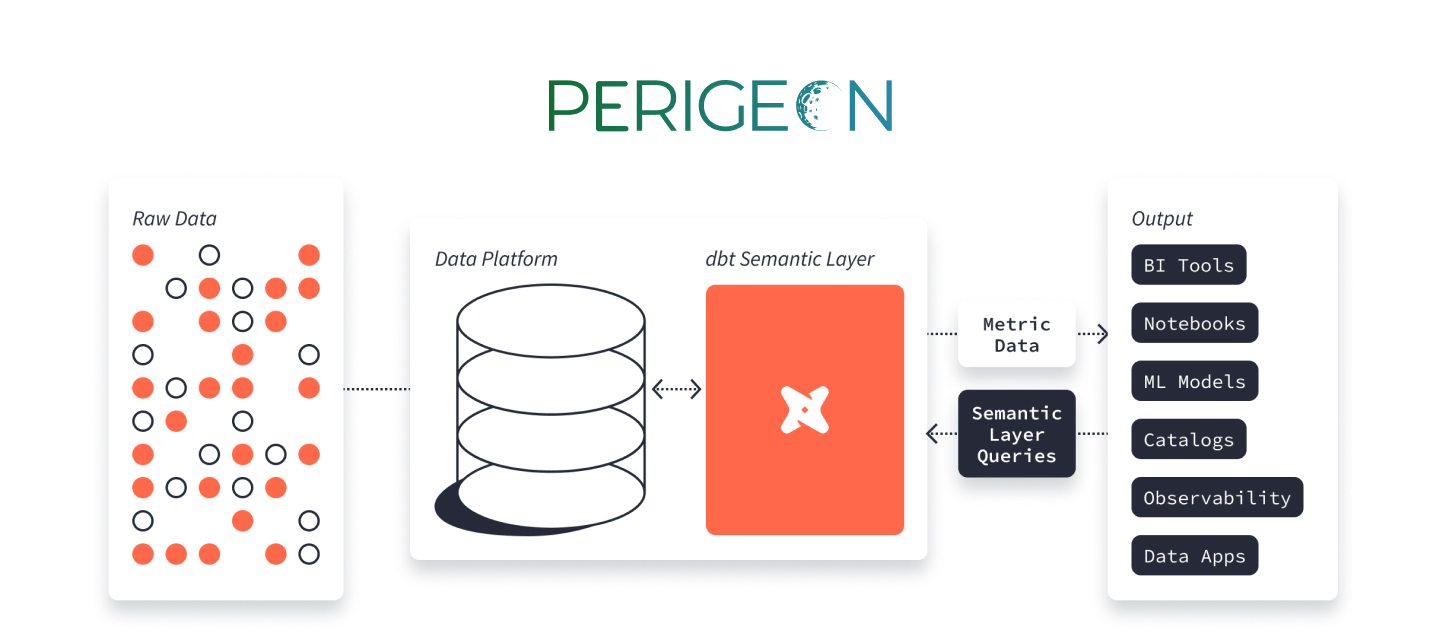In the realm of data analytics, the efficiency and effectiveness of the underlying data transformation processes are pivotal. The dbt (data build tool) Semantic Layer emerges as a transformative force, streamlining data workflows, and empowering analytics teams to derive actionable insights. This blog post explores the dbt Semantic Layer, delving into its significance, benefits, and how it revolutionizes the way organizations approach data modeling and analytics.
Understanding the dbt Semantic Layer:
The dbt Semantic Layer is a powerful framework that allows organizations to create a unified, business-friendly representation of their data. Unlike traditional data modeling approaches, where SQL queries are embedded directly into reports and dashboards, dbt separates the data transformation process from analysis. This separation enables data analysts and engineers to collaboratively build a semantic layer, which serves as a foundation for consistent and efficient data modeling.
Key Components and Concepts:
- Models:
Definition: In dbt, a model is a logical abstraction representing a specific business entity or metric. It contains SQL code that transforms raw data into a structured, business-friendly format.
Significance: Models provide a modular and reusable way to structure transformations, promoting consistency across analyses.
- Snapshots:
Definition: Snapshots in dbt capture the state of a table at a specific point in time, enabling historical analysis.
Significance: For scenarios where tracking changes over time is crucial, snapshots ensure accurate historical reporting.
- Seeds:
Definition: Seeds are tables that dbt reads directly from the data warehouse, allowing users to bring external data into the dbt project.
Significance: Seeds facilitate the integration of external data sources, enhancing the scope and flexibility of the Semantic Layer.
- Tests:
Definition: dbt allows users to define tests that validate the correctness of data transformations and ensure the quality of the semantic layer.
Significance: Tests provide an automated mechanism to validate data integrity, enhancing the reliability of analytics outputs.
Advantages of the dbt Semantic Layer:
- Consistency Across Analyses: The dbt Semantic Layer ensures consistency in how data is transformed and modeled, providing a standardized foundation for analytics across the organization.
- Collaboration Between Analysts and Engineers: dbt promotes collaboration between data analysts and engineers by offering a shared environment for modeling and transformation. This collaborative approach bridges the gap between technical and business teams.
- Version Control and Documentation: dbt integrates with version control systems, allowing teams to track changes to the semantic layer over time. Additionally, it generates documentation automatically, providing transparency into data transformations.
- Efficient Iteration and Development: The modular nature of dbt models enables efficient iteration and development. Changes in data transformations can be made incrementally without affecting the entire workflow.
Implementing dbt Semantic Layer in Workflows:
- Installation and Setup: Start by installing dbt and configuring it to connect to your data warehouse.
- Define Models: Create dbt models to represent different business entities or metrics. Write SQL code within these models to transform raw data into the desired format.
- Leverage Version Control: Integrate dbt with version control systems such as Git to track changes to your dbt project. This ensures traceability and facilitates collaboration.
- Automate Testing: Define tests within dbt to automatically validate the correctness of your data transformations. This step enhances data quality and reliability.
- Generate Documentation: dbt automatically generates documentation for your project, providing an accessible reference for analysts and engineers. Keep this documentation up-to-date as your semantic layer evolves.
Transformative Analytics with dbt Semantic Layer:
The dbt Semantic Layer emerges as a game-changer in the realm of data analytics, providing organizations with a unified, business-friendly foundation for data modeling. By separating data transformation from analysis, dbt streamlines workflows, enhances collaboration, and ensures consistency across analytics outputs. As organizations strive for efficiency, transparency, and reliability in their data analytics processes, the dbt Semantic Layer stands as a powerful solution, empowering teams to derive meaningful insights from their data.
Perigeon Software goes beyond being just a tech solutions provider; we’re your dedicated partners on the journey to success. We’ve forged strong alliances with industry leaders such as Salesforce, dbt Cloud, and BigCommerce to bring you more than mere services we bring innovation personalized to your unique needs.
Through our collaboration with dbt Cloud, we transform data into insights that guide your strategic decisions.
At Perigeon, these partnerships are more than just collaborations – they signify our commitment to making technology work intimately for you, ensuring your business not only adapts but thrives in today’s dynamic landscape.
Drop us a mail at possibilities@perigeon.com to discuss your business requirement.






